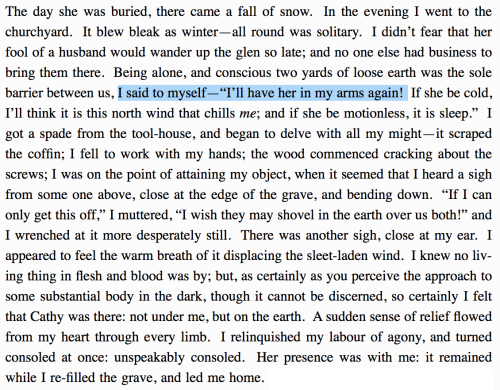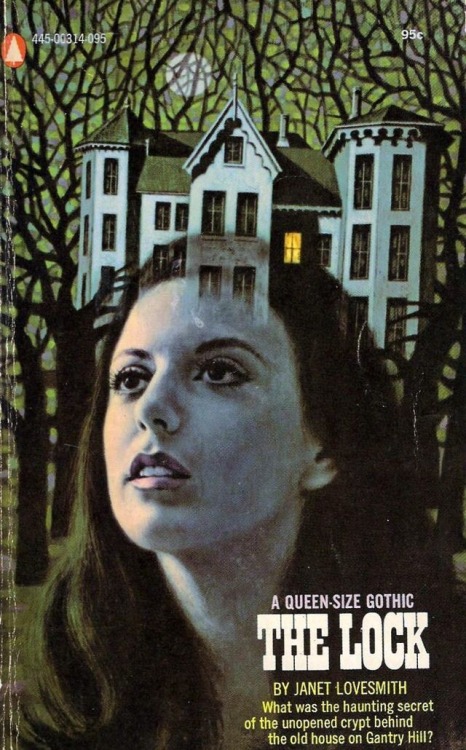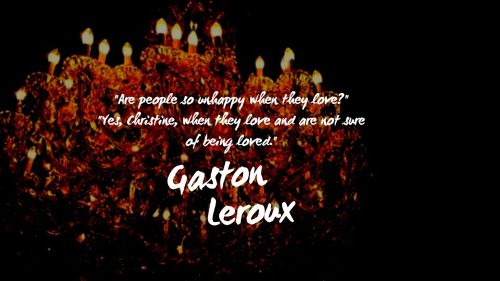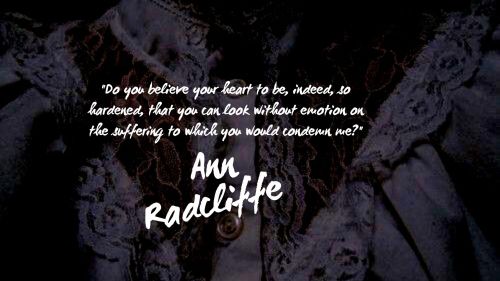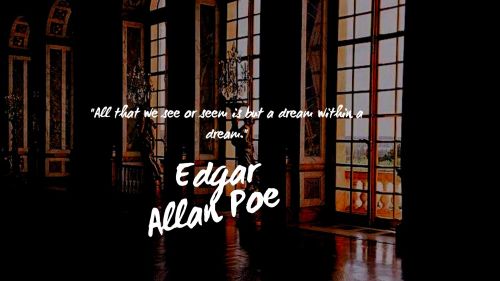#gothic fiction
Happy Birthday Charlotte Brontë, born April 21, 1816, died March 31, 1855
Charlotte Bronte believed believed art was most convincing when based on personal experience; in Jane Eyre she transformed her experience as a governess into a novel with universal appeal.
ReadJane Eyre, one of the classics of English Literature.
Post link
REVIEW: Mexican Gothic, by Silvia Moreno-Garcia

Mexican Gothic, by Silvia Moreno-Garcia
Release Date: June 30th, 2020
Rating:5/5
It’s hard to put into words just how eerie, Weird, and horrifying (in the best ways!) Mexican Gothic was, but I’ll do my best here.
Summary:Mexican Gothic follows Noemí Taboada, who, after receiving a worrisome letter from her cousin, journeys to High Place to come to her rescue. The house is…

We get enough people at book fairs, sellers included, asking us what Speculative Fiction is that we thought an explanation was merited.
Note: I have no intention of arguing the case that science fiction and fantasy are as much skilled works of art as regular literature; that argument has been covered enough times and it bores me. Time determines what is art not genre.
As the term suggests speculative fiction is fiction that involves some element of speculation. Of course, one can argue that all fiction is speculative insofar as it speculates what could happen if various elements of a story were combined. Yet we feel that this term is descriptive enough to encompass the type of literature we want to categorise. First, a word about genre
Book genre is of limited use and is often more harmful than good. If you went into a bookshop and asked for literature, you’d be taken to the fiction section. If you said that you were looking for any Darwinian literature you’d be sent to the science section. At some point it was determined that literature suggested artistic merit. Yet we also use it to cover a particular grouping of written works. The point is that classifying the written word is a little futile as common usage will usually dictate what that classification envelops, and common usage is of course open to interpretation. Genre does however allow boundaries to be set for marketing purposes; if a reader enjoyed a number of books in a certain genre then there’s a reasonable chance they’d enjoy other books in the same genre. From a critical perspective, understanding genre helps align a work of literature with one’s expectations; certain tropes and mechanisms are, to some extent, more acceptable in one genre than another.
Now, this element of speculation. The speculation in speculative fiction isn’t concerned solely with speculation over how various story elements might interact, but speculation over the fabric of those elements. A work of speculative fiction takes one or more elements of an otherwise perfectly possible story and speculates as to what would happen if that element existed outside of current understanding or experience. Essentially, it’s writing about things that aren’t currently possible. The Road by Cormac McCarthy is a father-son story of survival, nearly everything is contemporaneously possible, except one thing the setting of the story is plausible future.
When you pick up an Agatha Christie, a Jane Austen or a Graham Greene, regardless of how the story unfurls, and how perhaps unlikely the story, it’s always within the realm of possibility (poor writing and deus ex machina aside). Yet a Philip K. Dick, a Tolkien or a Stephen King will always seem impossible, given current understanding.
The word current is key, to allow inclusion of scientific speculation. A seminal work like Kim Stanley Robinson’s Red Mars has a lot of the science in place to explain how the colonisation of Mars might / could take place (I assume the science is correct; it doesn’t matter to me personally but I know a lot of readers are particular in this area). The speculation is on how plausible, but currently theoretical, scientific and technological advances might solve a problem.
There is a slight grey area where such scientific knowledge and its technical implementation exists and is currently possible and a good story has been written about it. Imagine a book about travelling to the moon written in 1969. Imagine it’s not an adventure, it explores personal relationships between the characters and their heroic journey. For someone unfamiliar with planned space travel such a book would seem like science fiction, yet it was of course entirely possible in 1969. I personally wouldn’t classify such a work as speculative fiction as it doesn’t fit the definition, but I’d certainly class it as science fiction if I were to market it as it would fit the bill for many readers. Similarly a book like Psycho, it’s a work of horror but there’s no supernatural element and it’s plausible and possible given current understanding.
For books like The Hobbit orCarriethecurrent part of the definition becomes less important; Middle-Earth neither has nor probably will exist, neither will telekinesis. Of course, as science progresses some things that are currently implausible will be come plausible, if not possible. Space travel being a great example; progress is constantly being made.
Speculative fiction is also an umbrella term so includes the majority of works in the fantasy, science fiction and horror genres, also smaller genres such as magic realism, weird fiction and more classical genres such as mythology, fairy tales and folklore. Many people break speculative fiction into two categories though: fantasy and science fiction, the former being implausible the latter being plausible (in simplistic terms). This is helpful for those interested in having some sort of technical foundation upon which to build their speculation, and those who aren’t.
When one thinks of science fiction, one thinks back to the 1930’s and the Gernsback era, perhaps earlier to Wells and Verne. One might even cite Frankenstein. When one thinks of fantasy one thinks of Tolkien, perhaps Victorian / Edwardian ghost stories, Dracula, perhaps Frankenstein. It seems comfortable to think of these things as modern endeavours. Anything earlier often falls under the general category of literature (in the non-speculative fiction sense). Take More’s Utopia,you’d find that under literature or classics, not under fantasy. Similarly Gulliver’s Travels. Again, this is just marketing; there’s no reason why Gulliver’s Travels should not be shelved next to Lord of the Rings other than to meet a reader’s expectation.
At Hyraxia Books we like to think of certain classic works not simply as works that have contributed to the literary canon, but also as works that have contributed to the speculative fiction canon. For us, Aesop’s Fables,Paradise Lost, The Divine Comedy, Otranto, A Midsummer Night’s Dream, The Iliad, The Prose Edda, Beowulf and the Epic of Gilgamesh are not simply classics, but also speculative fiction classics. We don’t like to think of the genre starting in the last two hundred years, we like to think of literature (in the non-speculative fiction sense) having branched off from the speculative rather than the other way round. We like to see how that story has played out over the millennia.
That is how we define speculative fiction for the basis of our stock. Of course, we stock other items too, many of which we are very fond of.
In this post we’ll be looking at John Webster's The Duchess of Malfi and the White Devil.

This is just the second post on our blog and already I’m breaking the rules somewhat. To remind you, the idea of this blog was to look at works of speculative fiction that have fallen from the general reader’s view. These are books that may well be beloved of the scholar and classicist, but for the general reader of speculative fiction they may as well be from Mars (OK, that’s a terrible analogy, it would’ve been better to say that they may as well be from earth).
So, why the John Webster then? Well, the answer I’ve come to is that there is a strong element of myth and horror in both The Duchess [of Malfi]and The White Devil, with their dark subject matters. I admit though, this is not enough to warrant inclusion. So how about the fact that they’re not actively promoted in modern culture. Again, a massive lie, both are currently being performed in London, the White Devil by the RSC no less.
So, I ask myself again, why did I pick the book? Well, the honest answer…all my speculative books were packed ready for WorldCon, and this was the only one that look remotely speculative left on the shelf [and I’ll admit, I know very little about either play]. However, I’ll justify myself by treating this as an examination of something I read recently noting that there was an element of lycanthropy in The Duchess. Coupling this with the disturbing undertones of his works we have a sort of proto-horror without the supernatural element. For the sake of brevity we’ll focus primarily on The Duchess, though The White Devil does have a couple of ghosts in it, which I’m pretty sure plant it firmly in the speculative camp.

John Webster, as many no doubt know, was a 17th century playlist remembered for his dark and macabre Jacobean dramas. The plays he’s best remembered for are the two aforementioned, with The Duchess being first performed privately around 1612-1613. He is credited as having provided some of the groundwork for the Gothic movement in literature of late 18th / early 19th century. Though it would be a stretch to describe his work as Gothic, it certainly slithers along with the same unsettling backdrop. Webster is one of only a handful of playwrights who have had their works under almost constant performance since first publication
The Duchess was first performed publicly by The King’s Men, the company of actors to which Shakespeare belonged and who first performed his plays. The date of performance seems tricky to tie down but the consensus seems to be between 1614 and 1621. The first edition of the book was published in 1623. 
So let’s have a look at the particular edition of the book that we have in stock [Bodley Head, 1930]. Like I said before, the book looked somewhat speculative sat on the shelf. To be more precise it looks like a work of the developing genre of supernatural horror from the turn of the century, adorned with a typically decadent design more familiar to book buyers of the 1900-1910 era. The book is illustrated by Henry Keen, whom I assume provided the device on the upper board and spine which are repeated on the jacket and the illustrated endpapers. Little is known about Henry Weston Keen. He died in 1935 in Switzerland and was born in 1871. Christie’s sold a set of five signed lithographs in 1995 for £225. Now if we were to very liberally compare him to the bastard child of Goya and Dore, that £225 would be a supreme bargain. Alas, his work isn’t Goya or Dore, nor is it Clarke or Beardsley, though he does appear to borrow elements from all the aforementioned. That said, his work does have a slightly sinister resonance, particularly the vignettes. If one were to savagely remove the plates from the book and present them to a bookish type, one wouldn’t be surprised if they thought they were from a book of Gothic horror. The Cardinal’s Window plate is particularly Gothic with the looming tower to the left of the frame.

The book carries facsimiles of recommendations by fellow dramatists William Rowley and Thomas Middleton, and a John Lane. This last name is proving difficult to research primarily because a much later John Lane was a publisher, ironically, a partner (with Elkin Mathews) in Bodley Head. The best guess we have is a poet of that name who the Dictionary of National Biography has as being active around 1620, apparently a friend of Milton’s father who published only two pieces - I assume that reputation far outweighed publication prowess in those days.
The facsimile title page notes that The Duchess was performed at Blackfriars privately and then publicly at The Globe. The White Divel was first published in 1612 [spelling is correct as per title page - I’d be interested to find out why it was spelt as Divel, it doesn’t appear to by etymologically linked]. The title of The Duchess per the title page is The Tragedy of the Dvtchesse Of Malfy, auction records show two copies, both from the 1930s, one listing reports that this was the first play to record the names of the characters with the actors - an interesting note. This copy sold for £12 with some leaves provided from a later copy. The second copy was seemingly complete and sold for £55 (£3,500 with inflation). Major British institutions hold copies including the BL, V&A, NLS and Leeds University (I may pop and see it). Anyway, that’s not the book I have.

So, finally, to the lycanthropy claim. Well, whether we’re talking about a physical transformation from man to wolf to man, a reported transformation, or a metaphorical transformation is not really the point. It seems that it’s likely a literary device with lycanthropy not only accentuating the beastliness of Ferdinand but also taking a swipe at Catholic prelacy, power in general and emotionally decay. But there’s certainly something deeper wherein Webster is suggesting that emotion can to some extent dictate the physcial. Either way, this is certainly a narrative element of speculative fiction, and so I feel justified in including it here!
Let’s have a look at a few lines, and you can judge for yourself:
“PESCARA: Pray thee, what’s his disease?
DOCTOR: A very pestilent disease, my lord, They call lycanthropia.
PESCARA: What’s that? I need a dictionary to’t.
DOCTOR: I’ll tell you. In those that are possess’d with’t there o'erflows Such melancholy humour, they imagine Themselves to be transformed into wolves; Steal forth to churchyards in the dead of night, And dig dead bodies up: as two nights since One met the Duke ‘bout midnight in a lane Behind St. Mark’s Church, with the leg of a man Upon his shoulder, and he howl’d fearfully; Said he was a wolf, only the difference Was, a wolf’s skin was hairy on the outside, His on the inside; bade them take their swords, Rip up his flesh, and try: straight, I was sent for, And having minister’d unto him, found his grace Very well recover’d.”
To summarise, while Webster’s plays might not be for the regular reader of speculative fiction, they certainly gel nicely with those readers of speculative fiction with a penchant for the weird and macabre, particularly those who enjoy the works of Hope Hodson, Machen, Blackwood etc.
Our copy is available here: Link


Image: My OC nerdy vampire dad Zeynel carries a stack of books. His pet albino raven greets him on top of that stack.
oh please do share some more vampire/gothic fiction recs! I love The Carpet Merchant btw and am curious about your inspirations.
Hoooyeah!! Time to share that KNOWLEDGE:
- Dracula, Bram Stoker: obviously.
- Carmila, Sheridan Le Fanu: If you think the original Dracula has big repressed queer vibes, Carmilla is a hundred times over and has surprisingly evocative textual evidence of lesbian tension between the punk goth futch vampire and the blonde madonna heroine. More traditionally gothic with regards to the story structure and tropes compared to Dracula. Which makes it sexier.
- The Vampyre, John Polidori: This is the first appearance of an aristocratic Lestat-type vampire in literature. It’s an okay story, nothing impressive except as a historical artifact of the Ur literary vampire. However I cannot forget this footnote from the story, which describes a particular version of a vampire that oozes blood out of its pores???? What the heck.
- The Giaour, Lord Byron: This poem is influential to TCM because it’s that link between literary vampires and their connection to Oriental literature (stories from West and Central Asia translated and embellished into Western language and lens i.e 1001 Nights), alongside Robert Southey’s Thalaba. It’s set in Istanbul and talks about a love triangle, and how the infidel lover is cursed to become vampire.
I’m so excited too! I read Dracula for the first time last year, and i haven’t had anyone to talk to about it! This is awesome!
Yeah same! I couldn’t talk to anyone about Dracula or literary vampires outside of my gothic fiction class @_@ I can’t wait to see everyone’s responses to the story.
Gilgamesh by mail where you get argyle tablets delivered to your house every month
I’ll collect them like our favourite Babylonian scammer.
It’s such a fun way to read a book, really amps up the tension!
It is!! It’s not the same experience reading the whole book all at once, because the writing can get sluggish and Too Much and very into the details. Treating it like the occasional email you’re getting from your deranged pals is more exciting and narratively appropriate.
This or That, Gothic Edition, Part 2
The first one was super popular, so I made another :)
buried alive or bleeding out // vampire hunter or witch hunter // tragic past or tragic ending // doppelganger or misunderstood monster // vampire or werewolf // boarding school or orphanage // ghost ship or haunted train // blood bath or descent into madness // decaying ruins or abandoned mansion // mysterious widow or strange orphan // lost in the woods or pursued by an assassin // hypothermia or starvation // inherited curse or deal with the devil // return from the dead or supernatural sleep // mad scientist or creepy housekeeper // full moon or moonless night // thick fog or heavy rain // physical torture or unexplained illness // hypnosis or sleepwalking // ghostly laughter or mysterious crying // crows or bats
buried alive or bleeding out (both, I can’t choose) // vampire hunteror witch hunter // tragic past or tragic ending // doppelganger or misunderstood monster //vampire or werewolf (both, again) // boarding school or orphanage // ghost ship or haunted train//blood bath or descent into madness // decaying ruins or abandoned mansion // mysterious widow or strange orphan//lost in the woods or pursued by an assassin // hypothermia or starvation // inherited curse or deal with the devil // return from the dead or supernatural sleep // mad scientist or creepy housekeeper // full moon or moonless night // thick fog or heavy rain // physical torture or unexplained illness // hypnosis or sleepwalking// ghostly laughter or mysterious crying //crowsor bats
Jill Galvan. The Sympathetic Medium: Feminine Channeling, the Occult, and Communication Technologies, 1859-1919. Cornell University Press, 2010. Hardcover. 216 pages.
Shop link in bio.
This or That, Gothic Edition, Part 2
The first one was super popular, so I made another :)
buried alive or bleeding out // vampire hunter or witch hunter // tragic past or tragic ending // doppelganger or misunderstood monster // vampire or werewolf // boarding school or orphanage // ghost ship or haunted train // blood bath or descent into madness // decaying ruins or abandoned mansion // mysterious widow or strange orphan // lost in the woods or pursued by an assassin // hypothermia or starvation // inherited curse or deal with the devil // return from the dead or supernatural sleep // mad scientist or creepy housekeeper // full moon or moonless night // thick fog or heavy rain // physical torture or unexplained illness // hypnosis or sleepwalking // ghostly laughter or mysterious crying // crows or bats
buried alive or bleeding out//vampire hunter or witch hunter // tragic past or tragic ending // doppelganger or misunderstood monster //vampire or werewolf // boarding school or orphanage // ghost ship or haunted train // blood bath or descent into madness // decaying ruins or abandoned mansion // mysterious widow or strange orphan // lost in the woods or pursued by an assassin //hypothermia or starvation // inherited curse or deal with the devil // return from the dead or supernatural sleep //mad scientist or creepy housekeeper // full moon or moonless night // thick fog or heavy rain// physical torture or unexplained illness // hypnosis or sleepwalking // ghostly laughter or mysterious crying // crows or bats
Tagging anyone who wants to do this (that means you, yes you!)

“Accursed creator! Why did you form a monster so hideous that even you turned from me in disgust? God, in pity, made man beautiful and alluring, after his own image; but my form is a filthy type of yours, more horrid even from the very resemlance.” - Mary Shelley, Frankenstein





